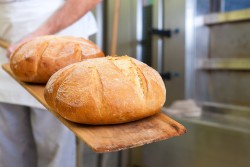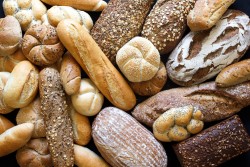Over ons
Onze bakkers verzorgen dagelijks een grote sortering van verse producten.
Original Title: Xianbei's "Kneeling Animal-shaped Gold Ornaments Inlaid with Gems" and the Northern Wei Dynasty's "Hand-cast Gold Man" This article is the original article of "National History of China · Twenty-four". Please leave a message in the background. Welcome to forward it to the circle of friends! 3121 words | 6 minutes to read Several gold and silver seals and early Tuoba Xianbei ornaments should be regarded as national first-class cultural relics. For decades, scholars have constantly cited "Jin Xianbei Guiyi Hou", "Jin Wuwan Guiyi Hou" and "Jin Xianbei Shanzhonglang General" to illustrate the relationship between the Western Jin Dynasty and Tuoba Xianbei, but few people pay attention to these Xianbei gold wares. In 1956, a batch of early Tuoba Xianbei gold and silver wares were found in a cellar in Shahuzigou, Xiaobazitan, Liangcheng County, Wulanchabu League, Inner Mongolia at that time, including two gold seals of "Jin Xianbei Guiyi Hou" and "Jin Wuwan Guiyi Hou", a silver seal of "Jin Xianbei Shuishan Zhonglang General" and 10 other gold ornaments. These cultural relics are now in the Inner Mongolia Museum. Shahuzi Valley, Xiaobazi Beach, Liangcheng County, is located in the Manhan Mountain in the northwest of Daihai, which is called "Shenhepi" in the Book of Wei. It is the place where Tuoba Yi, the eldest grandson of Liwei, who is respected as the ancestor of Tuoba people, has been stationed for a long time. At the same time as the three seals, a gold plaque engraved with the three Chinese characters "Yi Jin" was unearthed, so it can be concluded that the owner of these gold and silver wares is Yi or his descendants. Several gold and silver seals and early Tuoba Xianbei ornaments should probably be regarded as national first-class cultural relics. For decades, scholars have constantly cited "Jin Xianbei Guiyi Hou", "Jin Wuwan Guiyi Hou" and "Jin Xianbei leading good corps commander" to illustrate the relationship between the Western Jin Dynasty and Tuoba Xianbei, but few people pay attention to these Xianbei gold wares. Yi gold ornament Expand the full text Engraving on the back of Yi gold ornament A gold ring with an animal head Ruyi gold ornaments Xiongnu tigers fight against wolves with gold ornaments Among the 10 gold ornaments, there are several pieces that seem to belong to women's ornaments, such as gold rings, gold earrings and so on. In particular, one of the cast gold statues may have a head shaped like some kind of mammal, with two exaggerated ears, which seems to emphasize the head features of this animal. The lower part of the kneeling body is like a bear and a man. The gold statue is 3.7 centimeters high, 2 centimeters wide and weighs 38.5 grams. It is a small round gold statue and the only casting image form in this batch of gold ornaments. The snout seems to be slightly carved after casting, and the carving is very rough. The head has raised eyes and is inlaid with two gray gems. Each arm is inlaid with two gems (one of which falls off on the right arm), one on the abdomen, three between the legs under the abdomen, and one on each knee (one of which falls off on the right knee). There are perforations on the edges of both arms and the edges of both hips, which may be used to tie a string for easy wearing. Golden statue with animal head and human body kneeling The nature, purpose and use of this gold ware are unknown. The book Grassland Culture-The Broad Stage of Nomadic People, edited by Zhao Zhifang and published by the Hong Kong Commercial Press, calls it "the golden hat of the kneeling beast with precious stones", which seems to be the only name that mentions its use. This kneeling zoomorphic gold ornament is obviously different from other gold ornaments in both shape and production process, and should not be made by professional craftsmen. From the Xianbei gold ornaments that have been found so far,personalised tailor tape, it is obvious that they inherit the traditions of Scythian culture and Xiongnu culture in the northern grassland of Eurasia, as well as the corresponding production technology of gold and copper ornaments, whether they are living utensils such as rings, cards, tubular ornaments, gold flower ornaments, or weapons such as heading, arrowheads and knives. Its process includes smelting, forging, carving, inlaying, mixing silver, gold plating and other gold and silver jewelry production methods, which is quite mature technology. The process of inlaying gemstones has also been programmed, and there is a relatively mature process. Observing the various modeling methods of Xianbei artifacts unearthed in various places,large print tape measure, most of the artists at that time were able to skillfully use abstract, exaggerated and symbolic techniques to pattern the images of animals, figures and plants, with concise lines and decorative beauty, and every detail was delicate and delicate. Although this kneeling zoomorphic gold ornament is an animal head and human body, its shape is childish and realistic, its arms are obviously asymmetric, and its snout is rough and casual. Compared with several other gold ornaments, it is very rough and lacks decorative and formal beauty. Its technological level and exquisite degree are far inferior to the gold ornaments made by professional craftsmen in the same period or in the early period. The author believes that it is not an ordinary gold ornament, but has a special symbolic significance, which should be related to the belief and worship of Tuoba people at that time. From the shape point of view, the golden figure with animal head may be related to fertility worship. The head of this kneeling zoomorphic gold ornament may imitate some kind of animal with strong fertility in nature, and the human body is also like a pregnant woman holding her abdomen in both hands. In the face of this kneeling zoomorphic gold ornament, the author often thinks of the "hand-cast gold man" in the historical records of Tuoba Xianbei. According to the Biography of the Empress in the Book of Wei, it was customary in the Northern Wei Dynasty for the imperial court to elect an empress and order the eligible ladies in the harem to "cast gold figures by hand, so that those who succeed will be lucky, and those who fail will not be allowed to stand.". Emperor Taizu Tuoba Gui once welcomed Liu Shi, the daughter of Liu Shi, the leader of the Dugu tribe. Liu Shi was the favorite in the harem and gave birth to the heir of Emperor Tuoba. After defeating the main force of Later Yan in the Battle of Shenhepi, the Northern Wei captured Zhongshan City, the capital of Later Yan, and Emperor Taizu took Murong Bao's youngest daughter into his harem, which was also very favorite. Emperor Taizu planned to set up empresses and asked them to cast gold figures. As a result, Liu's daughter was not cast successfully, Murong Bao's daughter was cast, and Murong was made empress as a matter of course. After that, the "ancestral method" of hand-casting gold people was followed by Taizong Tuoba's heir. In order to make friends with the heir of Tuoba, bespoken tape measure ,bra measuring tape, the later Qin Dynasty sent the princess to marry. The heir of Tuoba liked her very much and treated her with the courtesy of the empress, but the princess could only be a lady of the harem because she failed to cast a gold man, although she was still favored by the heir. Before Emperor Xiaowen, hand-cast gold figures became the "custom" of the Northern Wei Dynasty. Whenever the empress is officially conferred, it must be recognized through the special and mysterious ceremony of "hand-casting gold man" or "casting gold man". When the emperors are to be established, they must first cast gold figures, and only after success can they obtain the qualifications of empresses. Even if thousands of favorites are gathered in one, if the "hand-cast gold man" fails, she is not qualified to be a queen. As an emperor, he could not choose his own empress. In ancient China, this situation could only occur when the powerful officials of the court were in power or when the empress was in power and the emperor was out of power. It was unique to the Northern Wei Dynasty that the system of "hand-cast gold man" candidate empress persisted in the palace for more than a hundred years. Although Wei Shu began to record this strange practice from Taizu Tuoba Gui, it will not be a system established when Tuoba Gui proclaimed himself emperor. The emperor would not make such a system to limit his power out of thin air, it should be a continuation of an ancient Tuoba custom. The grassland color of Tuoba regime was called "northern custom" and "Hu custom" by inland scholars, but in fact, these so-called "customs" were mostly Shaman beliefs and customs. In the Northern Wei Dynasty, there were obvious Shaman beliefs in the daily way of doing things and major sacrificial celebrations. Shaman belief advocates that "all things have gods". Heaven, earth, mountains, rivers, vegetation, sun, moon and stars all have gods, and all aspects of social life and daily things have their own gods. Ethnic surveys in the last century found that there were ginseng gods, grain gods, pestilence gods, livestock gods, goddess gods, guide gods, hunting gods, willow gods and fishing gods in the life of Shaman ethnic groups, involving all aspects of social life, many of which were idolized. During the reign of Emperor Xiaowen of the Northern Wei Dynasty, there were more than 1200 shrines worshipped by governments at all levels. When Emperor Xiaowen was completely sinicized, he abolished the "more than 40 gods of water and fire", all of which were "doors, households, wells, stoves, and the middle". Quite a number of gods are worshipped in temples, which is closely related to the traditional beliefs of Xianbei and the primitive Shaman beliefs and customs. In the process of blending, reorganization and development of tribes in the northern grasslands, there are often alliances or regimes that rely on marriage. The tribes of "wife's family" and "mother's family" play an important role in it. Tribal leaders usually marry several tribes around them at the same time and marry women from different tribes. In the tribal group of Tuoba Xianbei, there are often several ladies who have powerful maternal forces behind them. It is difficult to balance which one is the main one. The best way is to give it to the gods to choose. In the world of Shaman belief, even in women's life and production activities, including childbirth, raising children, eliminating diseases and disasters, there is also a corresponding worship of gods and puppets. Shamanism believes that animals and plants in nature have some kind of "spirituality", and they have some kind of connection with human beings. Worship them, worship them, or will gain some function from them, or gain some protection. This kind of "hand-cast gold man" appeared in the harem of the Northern Wei Dynasty should be a God related to fertility. The wife of the leader of Tuoba worshipped and wore it, which should be a religious activity to pray for the tribe. Its purpose should be to pray for more children and to bless the health of their descendants so as to make the tribe prosperous. Therefore, the successful completion of the "hand-cast gold man" can be qualified to take charge of the harem. This omen of "success is good luck" means that she will be blessed and sheltered by God, which indicates that she can complete the important task of multiplying the descendants of Tuoba and make the tribe prosperous. There is no specific description of the shape and production methods of this kind of gold figure in the literature records, so the problems of different shapes and technological levels are unavoidable, so it is speculated that these rough, lack of decorative and formal beauty of the "hand-cast gold figure" are not like professional craftsmen, but should be made by the candidate's wife. At the same time, in the ethnological survey, it is found that almost all the gods worshipped by the Shaman or the family members who believe in Shaman in different regions are hand-cut, hand-sewn or hand-kneaded by themselves. There are no professional idol-making craftsmen and no shape norms. The materials, shapes and sizes used in different regions, different nationalities and different times vary greatly. Now in the National Palace Museum, the sacred puppets worshipped in the secret room of the Qing Dynasty palace originated from Shaman belief. Although they were offered by the royal family, their shapes were simple and crude, and they were not made by professional craftsmen. These discoveries and objects may further confirm the above speculation. The "hand" of the "hand casting gold man" is the delicate hand of the candidate's wife. It is impossible for a weak woman in the harem to cast a colossus. This gold statue, the gold figure is not big, about 40 grams, the use of precious metals is not much, coupled with the low melting point of gold, good plasticity, several people do together, barely able to complete, but it is quite difficult for non-professionals, which is the reason why the "hand-cast gold figure" is rough and simple. Fortunately, "success is auspicious", its symbolic significance is far greater than the pursuit of technological level. The size and style of this golden statue are completely in line with the characteristics of hand-formed by non-professionals, and it is likely that it is a shaman idol from the hands of the wife of Tuoba Chieftain. Its owner should be "Qi Hou", the wife of Emperor Huan Yi, who was posthumously honored in the first year of Daowu Tianxing (398). (This article only represents the views of the author and does not represent the position of this number.) The history of China is new again! "National History of China" Post Office subscription set (subscription code: 28-474) is in full swing, a set of four copies, one-time possession of the whole year! The origin of the millet has been wrongly judged by Western scholars for a hundred years, and the reasons behind it are thought-provoking. What happened to the six surviving Chinese passengers on the Titanic? The first "decapitation" over the Mediterranean was given to Gaddafi by Reagan. Deng Tingzhen, the first person in China to refuse to cede Hong Kong Eating looks so ugly that Xiang Yu's company went bankrupt as soon as it opened Welcome to forward the circle of friends The public name must be reprinted with authorization and shall not be used on platforms outside WeChat. WeChat ID for business cooperation and ordering: zggjls01 Submission email: zggjls01@126.com. Postal code: 28-474 QQ group: 460 382533. Phone: 13372012240 back to Sohu, see more Responsible Editor: (function() { function getBrandHtml() { var brands = [],custom tape measure, html = ''; for(var i = 0; i < brands.length; i++) { var brand = brands[i]; if(brands.length i+1) { html+= ''+brand.name+''; } else { html+= ''+brand.name+'、'; } } return html; }; if(document.getElementById('linkBtn')){ document.getElementById('linkBtn').onclick = function() { $('#brands').removeClass('brand');$ ( '# tipInfo').text ( 'Real name responded'); $ ('#linkBtn').remove();$ ('.real-response .content').css('line-height', '20px');$ ('.real-response .time').css('line-height', '20px'); }; document.getElementById('brands').innerHTML = getBrandHtml(); }; })();。 tape-measure.com

Ons broden assortiment is groot en veelzijdig, van vaste toppers tot verrassende seizoensprodukten, trendy noviteiten tot 'gouwe ouwe', veelal volgens authentieke recepten.

Onze banketbakkers bakken elke dag verse taarten, voor iedere gelegenheid. De lekkerste verjaardagstaart, de mooiste bruidstaart of geboortetaart.
maandag tot en met vrijdag 08:30-17:30 uur
zaterdag 08:00 - 17:00 uur
Adres: Haagweg 4F10, 2311 AA Leiden
Telefoonnummer: 071-3410161
E-mailadres: info@compra.nl
Mail ons gerust via dit formulier – we zullen zo snel mogelijk op uw bericht reageren.







